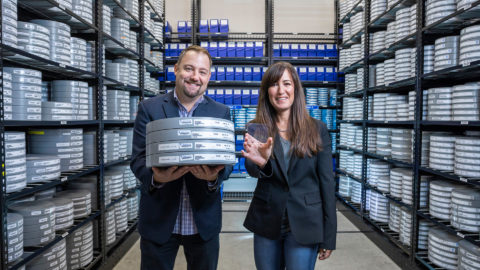Burning Questions: Virtualization (1) – Burning question: How can IT shops reduce server virtualization’s impact on storage?
Virtualizing servers without adapting physical storage systems to the unique needs of VMs is a kiss of death for any virtualization project. In addition to consolidating five or 10 applications onto a single server, virtualization tools from the likes of VMware do “magical things” such as instantly move workloads from one running server to another, and replicate VMs for disaster-recovery purposes, notes analyst Arun Taneja of the Taneja Group.
All of this requires a larger storage buffer for “resume and suspend space”, even if that extra space remains unused the majority of the time. In the past VMware has simply recommended that customers double storage capacity or at least significantly increase it. If a customer’s storage utilization was at 40%, a typical rate, then in the virtualization world that could drop to 20% and storage efficiency has been chopped in half.
The key to solving this problem is to use thin provisioning, a feature enabled by storage virtualization. Physical storage typically allocates one storage volume to one application only, and if that application doesn’t use all the storage then it will simply be unused.
Thin provisioning, on the other hand, pre-allocates a larger amount of storage to applications than is actually available to them, allowing applications to share a pool of storage and use only what they need, when they need it. With such technology, available in newer versions of VMware’s virtualization soft are and from storage vendors such as HP 3Par, NetApp and Dell Compellent, customers can increase data utilization to 80% and be even more efficient than they were prior to virtualizing, Taneja says. While thin provisioning solves the utilization problem, it does not address the dreaded “I/O blender effect.”
AsVMs are added to a physical server, the server and connected systems have to handle more I/O patterns. The order of the input/output operations is randomized, potentially harming the performance of each application.
One key to solving this problem, Taneja says, is “wide striping” technology, which distributes the I/O load across many disks, rather than just one or a few. Wide striping can help eliminate storage bottlenecks caused by multiple VMs residing on the same physical server, and thus allow higher VM densities.
Taneja says the storage industry was “like a deer in front of headlights” when the data access problems caused by virtualizationemerged. But much progress has been made in the past 12 months, he adds. While the likes of 3Par and Compellent were on the cutting edge, established vendors such as EMC and Hitachi Data Systems are now following suit and incorporating at least partial storage virtualization into their existing product lines through firmware upgrades.
At Brandeis University in Massachusetts, which has virtualized nearly all of its workloads with VMware and Xen, director of networks and systems John Turner says he went with a Compellent storage system largely because of its thin provisioning and snapshot technology, which greatly reduces the amount of data needed to store virtual machine disk files.
“Storage is a huge burden on virtualization“, Turner says.
For more information and a personalized IT Solutions business offer, please contact us.
Source: resources.idgenterprise.com



